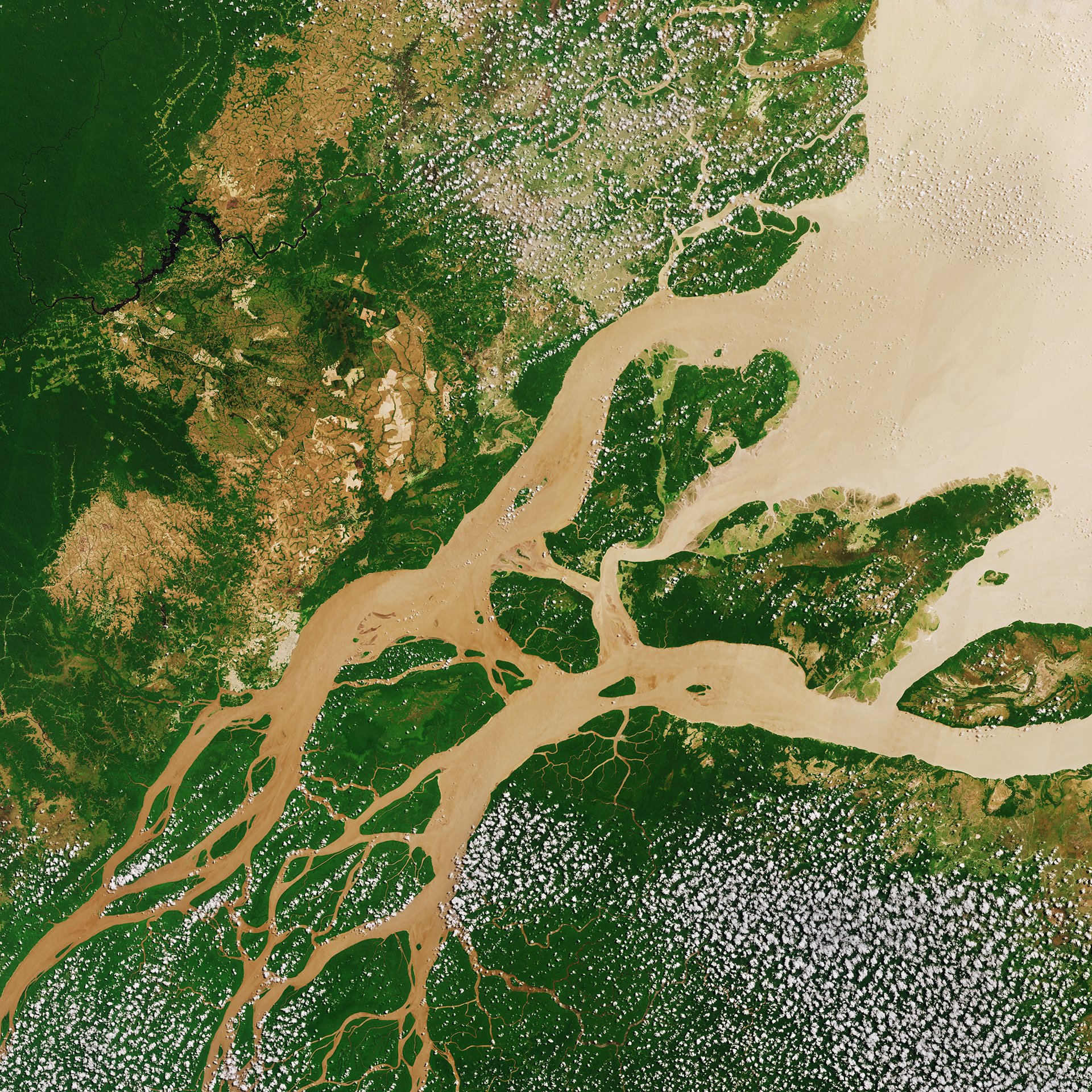Photo courtesy of European Space Agency via Wikimedia Commons
By Lily Benn ’24
Staff Writer
Earlier this month, scientists reported that the Amazon River has reached its lowest water levels yet since recording became a standardized practice in 1902, according to CNN.
The current water level has been reported as 13.59 meters, or 44.6 feet. CNN compared this number to the levels recorded last year at 17.60 meters, or 57.7 feet. This number was measured on Oct. 16 at the port city of Manaus, the meeting point of the Amazon and Rio Negro rivers, amid a months-long drought.
CNN reported that in many areas throughout the Amazon Rainforest, tributaries of the Amazon River — such as the Rio Negro — are losing water rapidly and nearing record lows as well.
Ruth Martins, a leader of the small riverside community Boca do Mamirauá, said in an interview with The New York Times that some places are seeing only dirt where parts of rivers used to flow. Because of these tributaries drying up, many Indigenous and local communities are facing health and access crises, The New York Times reported.
A news article published by Rainforest Foundation U.S. indicated that low water levels are causing interruptions in the transportation of necessary goods and services to communities living throughout the Amazon Rainforest. Namely, food and water are limited, especially as this drought is killing many freshwater fish species and leaving various riverside communities dependent on fishing without food or a source of income.
The Rainforest Foundation U.S. explained that the state government of Amazonas in Brazil has declared the drought an emergency, explaining that 500,000 people are expected to lose reliable access to food and water by the end of October.
The drought has left many communities without regular access to clean water — for some, the only alternative is stagnant, contaminated water, The New York Times wrote. Edivilson Braga, the coordinator of the local service of civil defense in Tefé, told The New York Times that people in his community are drinking, cooking and bathing in this contaminated water, which over time causes sickness not only in children and elderly people — the most vulnerable groups — but likely in anyone.
The New York Times continued that stagnant, warm water can easily become breeding grounds for infective mosquitos, increasing the risk of malaria and dengue in communities affected by this water scarcity.
The Rainforest Foundation U.S. explained that water scarcity increases risk in this situation. As is the case with water and food, medical supplies are also scarce due to the surrounding tributaries drying up and becoming inaccessible by boat. According to The New York Times, children in many communities are losing access to education, as their habitual riverboat ride to school is no longer accessible.
Biodiversity in the region has also been affected by the drought. High water temperatures have likely been the cause of an increase in endangered river dolphin deaths, with over 100 dead counted in one week, CNN reported. According to The Guardian, this drought has also led to an increased susceptibility to wildfires in the area. These wildfires have claimed the lives of plants and animals, alongside deteriorating the health of many people living in Manaus due to heavy air pollution.
The Rainforest Foundation U.S. declared that this extreme drought — and the health and biodiversity crises that come along with it — are not outlier events but rather can be directly attributed to changes in the global climate.
PBS also suggested a link between this drought, ongoing deforestation, forest fires and climate change, drawing from previous climate models.
“Cutting down trees, like global warming, makes rain scarcer and temperatures higher because the Amazon’s trees release moisture, cooling temperatures and forming rain clouds,” The New York Times explained.
According to The Guardian, it was Indigenous groups and individuals — specifically Apiam, an organization that represents 63 Indigenous tribes in the Amazon Rainforest — who first called and advocated for Brazil and other countries affected by the drought to declare a climate emergency earlier this month.
The Rainforest Foundation U.S. explained that the Amazon region needs immediate support, and few coordinated efforts exist to assist the suffering communities and ecosystems in this area. The foundation concluded by referencing Indigenous contributions to the fight against ongoing climate disasters and emphasizing the need for international solidarity.

